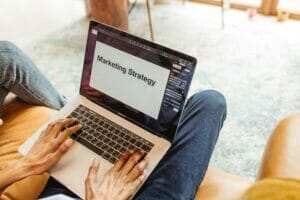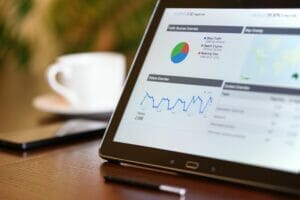The digital marketing world is dynamic, exciting, and a little overwhelming at times. With countless tools, capabilities, and platforms, the language can get complex and hard to follow. Whether you’re new to the digital world or an expert in digital marketing, here is a list of terms and definitions to help you learn the language and begin brainstorming all the possibilities with digital marketing.
Glossary of Terms
Addressable TV: allows advertisers to segment TV audiences and serve different ads to different audiences while watching the same program
Artificial Intelligence: when a machine mimics intelligent behavior, i.e. automations or identifying the best audience for marketing by using data (i.e: user behavior) that has already been analyzed to understand the needs and preferences of the consumer.
Application Programming Interface (API): a software program or connection that allows multiple computers or applications to communicate and work together
Backlink: links from outside domains that take the viewer to pages on your domain; help viewers find your content as it relates to their search topic and is important for SEO ranking and website quality
Behavioral Targeting: a method that allows a marketer to display relevant ads and messages to the right user based on the user’s information and web-browsing behavior
Boosted Post: a marketing tactic in which the marketer pays to have their post show up as sponsored content on non-follower’s feeds to increase exposure
Bounce rate: an email that couldn’t be delivered due to the server or spam issues and can be permanent or temporary
Buyer’s Journey/Funnel: a model that shows the process of a person becoming aware of your brand to becoming a customer. Ex: awareness, interest, desire, action
Call Ad: online ads that encourage users to call your company and are only shown on devices with calling capabilities
Clickthrough Rate (CTR): measures the success of an online advertising campaign; calculated by: number of clicks/number of impressions
Code: specially written text or instructions that computers can read and perform based on what the computer programmer wants to create
Competitor Targeting: strategy used to identify specific competitors and target their audience and customers
Connected TV (CTV): TV set connected to the internet via streaming devices such as Roku, PlayStation, or Smart TV.
Conversion: occurs when a user completes a desired action or goal based on your company
Conversion Rate: measures the percentage of users that complete a desired action on your website out of the total number of users to your website
Cost per Acquisition (CPA): measures the cost required to get a user to take a desired action and convert to a customer; calculated by: total cost of the campaign/number of conversions
Cost per Click (CPC): the actual price you pay for each click in your Pay-per-Click marketing campaign; calculated by: total amount spent/total measured clicks
Cost per mille (CPM): the cost an advertiser pays for one thousand views or impressions of their ad; calculated by: (total amount spent/number of impressions) x 1,000
Custom Audience Targeting (Facebook): a targeting option that lets you find your existing audience on Facebook using email addresses, web and app traffic, or Facebook engagement.
Custom Audience Targeting (Google): a strategy that allows marketers to target a specific audience by inputting certain interests, behaviors, similar websites, or apps of their ideal customer
Custom Dashboards: Custom dashboards allow you to see all your important metrics and KPIs in one location in real-time.
Customer Relationship Management (CRM): a combination of business strategies, software, and principles that help businesses build long-lasting relationships with their customers
Customer Relationship Management (CRM) Integrations: connecting CRM software and third-party applications so data can flow to, from, or between quickly, efficiently, and accurately
Demographic Targeting: a form of behavioral advertising that targets consumers based on demographic information such as age, gender, marital status, education, etc.
Digital Advertising: Digital advertising is the use of online platforms such as social media, search engines, and websites to publish promotional content. Ex: Geotargeting, online ad campaigns, retargeting, and SEO
Digital Marketing: a form of marketing that reaches potential customers through the use of the internet and/or other forms of digital communication
Direct Traffic: all traffic to your website where the referrer is unknown
Display Ad: Display ads are a form of online paid advertising that uses images, text, video, and audio and can be shown on websites, apps, or social media feeds
Email click-through rate: number of subscribers who click a link or image in your email /total emails sent
Email click-to-open rate: percentage of subscribers who click on a link or image in an email/number of subscribers who opened the email campaign
Email Marketing: a digital marketing strategy that sends emails to prospects and customers to promote products or services, develop relationships with customers, and communicate updates and messages to their audience
Email open rate: percentage of the total number of subscribers who open an email/number of emails sent
Engagement: how consumers interact with your brand through actions such as clicking a link, liking a post, or sharing your content
Geofencing: location-based service that uses radio frequency identification, GPS, Wi-Fi, or cellular data to trigger a targeted marketing action (i.e. text, email, online ad) when a consumer is physically within the geofence set by the marketer
Geotargeting: delivering content or ads to a consumer based on their geographic location
Hypertext Markup Language (HTML): standardized system using symbols or code that is inserted into files and used to tell web browsers how to display words, images, and website structures
Impression: Impressions are the number of times your website or ad appears in search results and is seen by a user
Internet Protocol (IP) Address: a unique address that identifies a device on the internet or local network and allows information to be sent and received
Key Performance Indicator (KPI): a quantifiable measure used to evaluate the success of an intended result or company
Keyword: a word or group of words an Internet user uses to perform a search in a search engine. Keyword marketing allows marketers to bid on keywords so that their ads show up when those keywords are searched for
Landing Page: standalone web page a user lands on when they click your ad; used for marketing campaigns to promote conversions (completion of a certain goal or action)
Lead: someone who shows interest in your company by visiting your website, filling out a form, or contacting your business
Lead Form Extension: requests/forms you receive from website visitors that allow you to contact them and increase your chance of conversion
Lead Generation: the process of stimulating interest and converting prospects into customers
Linear TV: traditional tv with scheduled TV programs broadcasted on its original channel in real-time
Live-Guided Tour: a combination of a virtual tour and a video call; the customer and marketer are able to schedule a video call and simultaneously go through the virtual tour together which allows for questions, comments, and discussion throughout the tour
Local SEO: a strategy to help your business’s website show up in local search results on search engines
Marketing Automation: Marketing automation uses software and technologies to effectively market on multiple online channels and automate tasks.
Metadata: tags or information used to describe the content of a web page to search engines
Mobile Responsiveness: Mobile responsiveness is a factor that ensures a web design displays correctly on any size screen including desktop, mobile, and tablet
Off-Page SEO: factors outside of your website that can be used to improve your website’s search ranking, i.e. backlinks, influencer marketing, retweets
On-Page SEO: factors you can control on your website to improve search rankings, i.e. content, HTML, keywords
Organic Traffic: visitors that reach your website through unpaid sources such as the search results pages on Google, Yahoo, Bing, etc.
OTT: stands for “over the top”, media service with video content accessed via the internet instead of cable or satellite, i.e. Netflix, Hulu, Apple TV
Paid Search: visitors reach your website through paid advertising such as GoogleAds or social media advertising
Pay-per-Click (PPC): online advertising model where an advertiser pays a publisher each time their ad is clicked
Programmatic Advertising: Programmatic advertising uses algorithmic technology to buy and sell online advertising space so that ads are delivered to the right people at the right time
Qualified Lead: someone who indicates interest in your brand and is more likely to become a customer
Remarketing: reaching out to current or past customers to re-engage them based on previous purchases or actions; usually through the use of email lists
Remarketing Funnel: strategy of presenting the right digital ad to a person based on where they are in the buyer’s journey
Retargeting: a marketing strategy that identifies and delivers ads based on a user’s past behavior or interaction with your website
Return on Investment (ROI): ROI measures the efficiency and profitability of an investment; calculated by: (net profit/cost of investment) x 100
RSS Feed: web feed formats that automatically update new web content
Schema Markup: code associated with your website that tells search engines precise information about who you are and what you offer; used to improve SEO
Search Ad: Search ads are a form of online paid advertising that is placed on search engine result pages
Search Engine: a web-based tool that searches and identifies items from a database that correspond to searched keywords; i.e. Google, Yahoo, Bing
Search Engine Optimization: SEO is a method that involves making changes to your website in order to improve its ranking and visibility on search engines.
SEO Ranking: SEO ranking determines your website’s position on a search engine results page and weighs factors such as organic traffic, keywords, page speed, backlinks, and more.
Search Engine Results Page (SERP): the web page that lists results shown after a user submits a search query on a search engine
Social Media Marketing: Social media marketing uses social media platforms to market products and services, build brand awareness, increase sales, and drive website traffic
Target Audience: a specific group of consumers who want your product or service and who you aim to reach
UTM codes: labeling system added to the end of URL’s and used to evaluate marketing performance by tracking information such as traffic source, medium, campaign name, content, or keywords
View through Rate (VTR): measures the number of people who viewed your video all the way through compared to the number of impressions; calculated by: total completed views/total measured impressions
Virtual Tour: Virtual tours are a simulation viewed online of an existing location through the use of sequential video, still images, or 360 panoramas
Website Development: Website development includes designing, building, and managing a website to be published on the internet
Website Domain Name: Domain name is the name of your website and the address where users can access your website
Website Hosting: an Internet service that allows websites to be accessible via the World Wide Web
WordPress: a free open-source content management system used for website building and maintenance
360 Photography: 360 Photography stitches together a number of photos to create one whole panorama photo and is used to create virtual tours
Are you ready to start improving your digital marketing strategy, or do you have questions about any of the terms and services listed? We would love to answer any questions and help you navigate your digital marketing journey.






